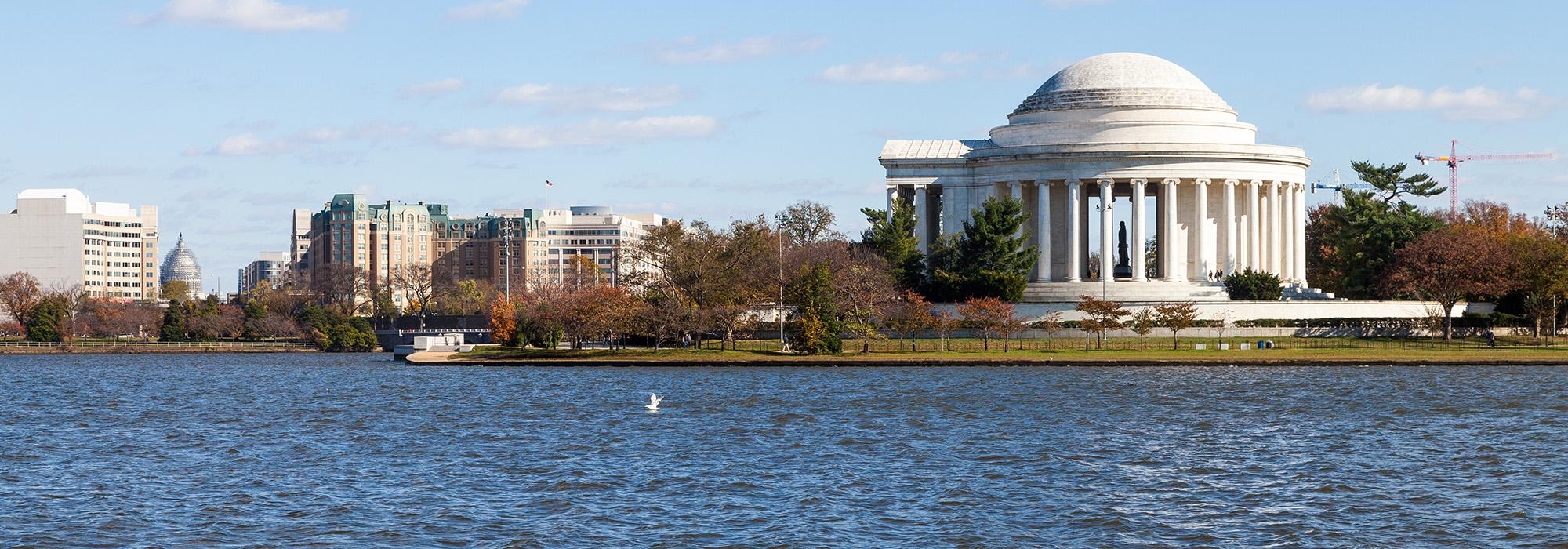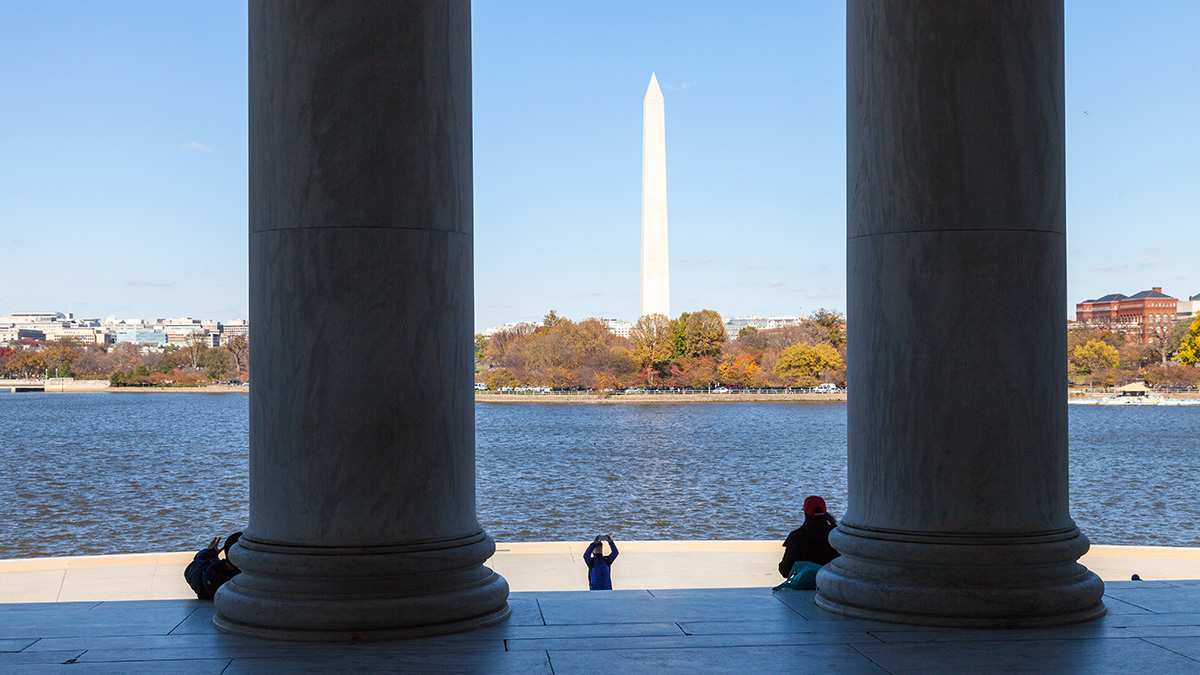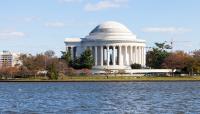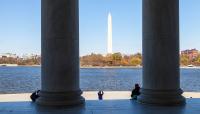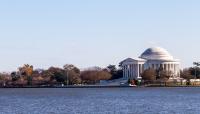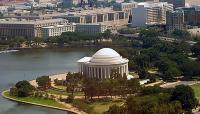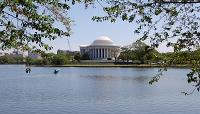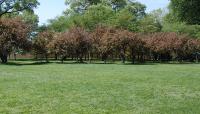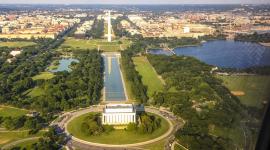Landscape Information
Situated on the shores of the Tidal Basin, the Jefferson Memorial occupies a prominent position as the southern anchor of the District of Columbia's meridian line, on axis with the White House and complementing the cross-axis of the Lincoln Memorial and Capitol.
Completed between 1939 and 1943, John Russell Pope’s memorial structure includes a portico, a circular colonnade surrounded by marble steps, and a shallow open-air dome. Pope’s neoclassical structure is complemented by the symmetry of Frederick Law Olmsted, Jr.’s Beaux Arts landscape that transitions to well-treed pastoral grounds. Olmsted placed the memorial on a plinth of three circumscribed earthen terraces of equal width, with walls descending to meet a round drive previously lined with elms at its base. Axial views of and from the monument are framed with four clusters of hollies, pines, and evergreen shrubs. The paved north plaza affords expansive views across the Tidal Basin, while the park-like south side contains a central lawn and perimeter shade trees complemented by the pre-existing cherry trees of the Tidal Basin. Later alterations include a foreshortened landscape south of the memorial due to highway expansion, a reconfigured circular drive and north plaza, and the addition of perimeter security barriers.
The Memorial was listed in the National Register of Historic Places in 1966.



